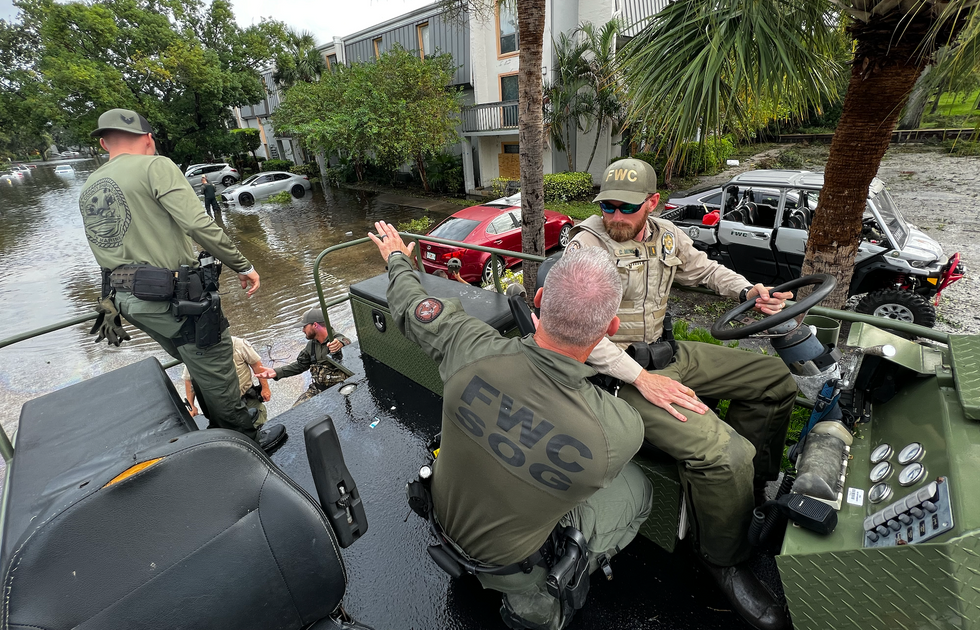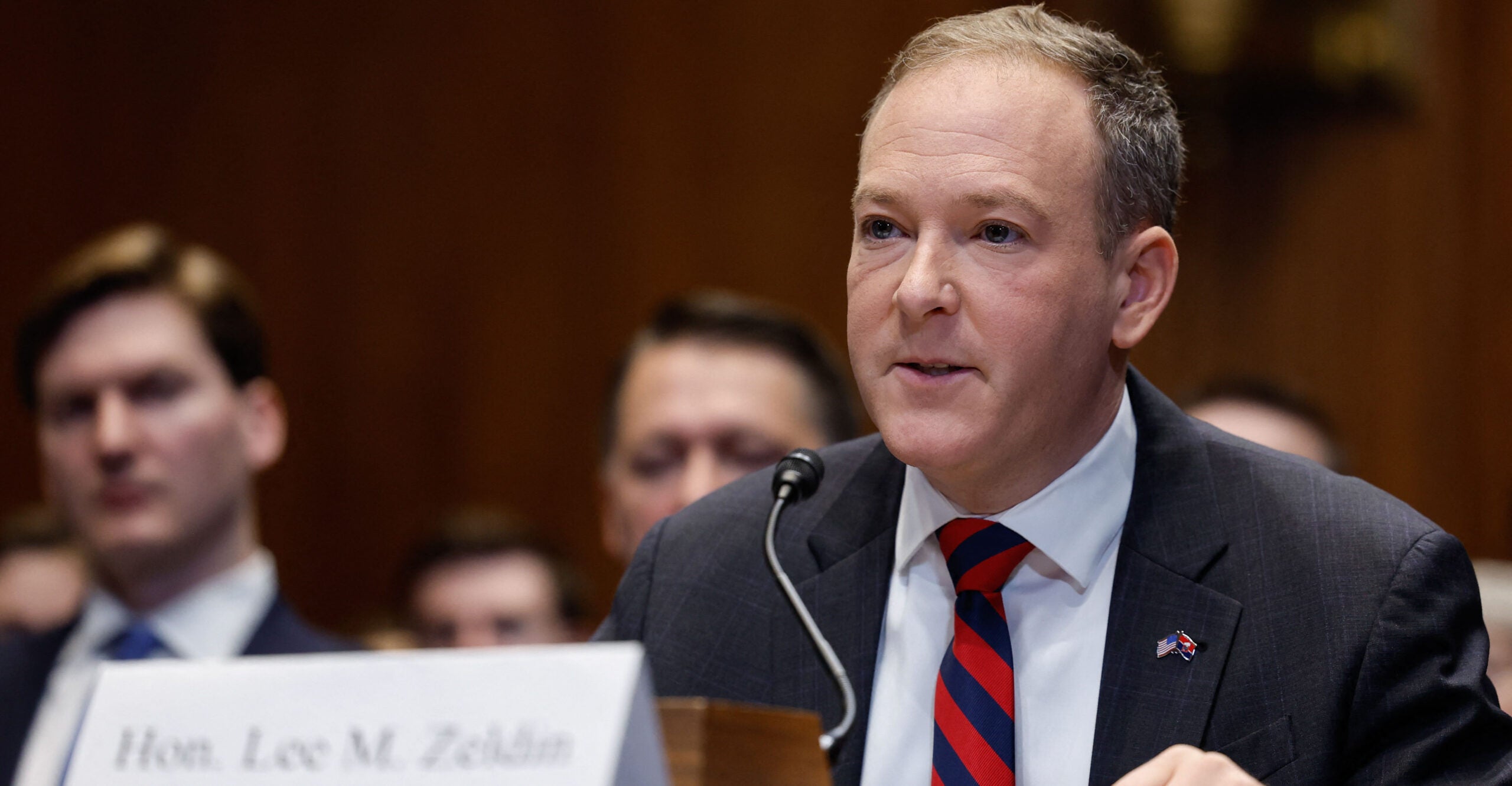Back-to-back hurricanes in Florida show importance of preparedness
TAMPA, Fla. — The Gulf Coast, central, and some eastern parts of Florida are once again in recovery mode after Hurricane Milton made landfall late Wednesday night. While the damage has been extensive, it was not total, as many had feared, since Milton did not make landfall into Tampa Bay. Throughout the week before Milton made landfall, officials from Governor Ron DeSantis (R) on down warned that while they were hoping for the hurricane to weaken from a Category 5, they were still expecting it to be a historically strong storm because the models had been having a hard time predicting what would happen. With that in mind, here is what some of the state had in place, ready respond once the storm had passed: over 6,500 Florida National Guardsmen; nearly 200 Florida State Guardsmen; hundreds of land, air, and water vehicles to support the FNG and FSG; the Florida Department of Law Enforcement directing 500 out-of-state law enforcement officers; over 100 Florida Fish and Wildlife Conservation Commission officers; Florida Highway Patrol escorting fuel trucks to replenish depleted gas stations; over 50,000 linemen to restore power; and the Florida State Fire Marshal’s Office fielding 23 urban search-and-rescue teams and 10 swift water teams. DeSantis made it clear that while the federal government and the Federal Emergency Management Agency were assisting the state in preparing for Hurricane Milton, his administration was the one running the show. It took nearly a week for President Joe Biden to approve active-duty troops. That is not to say the recovery from two hurricanes in a short time will be easy. There were over 10 deaths, and hundreds of people still needed to be rescued. However, the assets and infrastructure were in place to take immediate action once it was safe to do so.' The same could not be said in North Carolina when Hurricane Helene hit the western part of the state. This is not to say that North Carolina did not prepare at all for the massive flooding. In fact, there were multiple warnings about the danger ahead of Helene's rains. Shortly before Helene impacted his state, Governor Roy Cooper (D) found time to talk to the New York Times about "how North Carolina is fighting climate change at NYT Climate Forward." What Blaze Media found on the ground there, however, is that there were not nearly enough assets in place to respond to cut-off communities in the mountains, which is why private organizations, volunteers, and locals were often the primary first responders the first few days. While government agencies have been around to aid North Carolina, there simply were not enough to meet the demand, despite the warnings that this was going to be a significant storm for the region. It was clear the state and federal government were playing catch-up. It took nearly a week for President Joe Biden to approve active-duty troops to help the 1,000 North Carolina National Guardsmen who were overwhelmed with calls for help. What has made recovery efforts in western North Carolina more difficult is the fact the roads that go up the mountains were washed out for miles. Sometimes there is also no place for a helicopter to land. Flooding in the North Carolina mountains, while rare, is not without precedent. A hurricane that first hit South Carolina and then went north flooded Asheville and the surrounding areas in July 1916. Over 80 people died, and millions of dollars' worth of damage was caused by the storm. More recently, the Asheville area saw significant flooding in 2004 from Tropical Storms Ivan and Frances. Like Blaze News? Bypass the censors, sign up for our newsletters, and get stories like this direct to your inbox. Sign up here!


TAMPA, Fla. — The Gulf Coast, central, and some eastern parts of Florida are once again in recovery mode after Hurricane Milton made landfall late Wednesday night. While the damage has been extensive, it was not total, as many had feared, since Milton did not make landfall into Tampa Bay.
Throughout the week before Milton made landfall, officials from Governor Ron DeSantis (R) on down warned that while they were hoping for the hurricane to weaken from a Category 5, they were still expecting it to be a historically strong storm because the models had been having a hard time predicting what would happen.
With that in mind, here is what some of the state had in place, ready respond once the storm had passed:
- over 6,500 Florida National Guardsmen;
- nearly 200 Florida State Guardsmen;
- hundreds of land, air, and water vehicles to support the FNG and FSG;
- the Florida Department of Law Enforcement directing 500 out-of-state law enforcement officers;
- over 100 Florida Fish and Wildlife Conservation Commission officers;
- Florida Highway Patrol escorting fuel trucks to replenish depleted gas stations;
- over 50,000 linemen to restore power; and
- the Florida State Fire Marshal’s Office fielding 23 urban search-and-rescue teams and 10 swift water teams.
It took nearly a week for President Joe Biden to approve active-duty troops.
That is not to say the recovery from two hurricanes in a short time will be easy. There were over 10 deaths, and hundreds of people still needed to be rescued. However, the assets and infrastructure were in place to take immediate action once it was safe to do so.'
The same could not be said in North Carolina when Hurricane Helene hit the western part of the state.
This is not to say that North Carolina did not prepare at all for the massive flooding. In fact, there were multiple warnings about the danger ahead of Helene's rains. Shortly before Helene impacted his state, Governor Roy Cooper (D) found time to talk to the New York Times about "how North Carolina is fighting climate change at NYT Climate Forward."
What Blaze Media found on the ground there, however, is that there were not nearly enough assets in place to respond to cut-off communities in the mountains, which is why private organizations, volunteers, and locals were often the primary first responders the first few days. While government agencies have been around to aid North Carolina, there simply were not enough to meet the demand, despite the warnings that this was going to be a significant storm for the region.
It was clear the state and federal government were playing catch-up.
It took nearly a week for President Joe Biden to approve active-duty troops to help the 1,000 North Carolina National Guardsmen who were overwhelmed with calls for help. What has made recovery efforts in western North Carolina more difficult is the fact the roads that go up the mountains were washed out for miles. Sometimes there is also no place for a helicopter to land.
Flooding in the North Carolina mountains, while rare, is not without precedent. A hurricane that first hit South Carolina and then went north flooded Asheville and the surrounding areas in July 1916. Over 80 people died, and millions of dollars' worth of damage was caused by the storm.
More recently, the Asheville area saw significant flooding in 2004 from Tropical Storms Ivan and Frances.
Like Blaze News? Bypass the censors, sign up for our newsletters, and get stories like this direct to your inbox. Sign up here!
Originally Published at Daily Wire, World Net Daily, or The Blaze
What's Your Reaction?

































































































